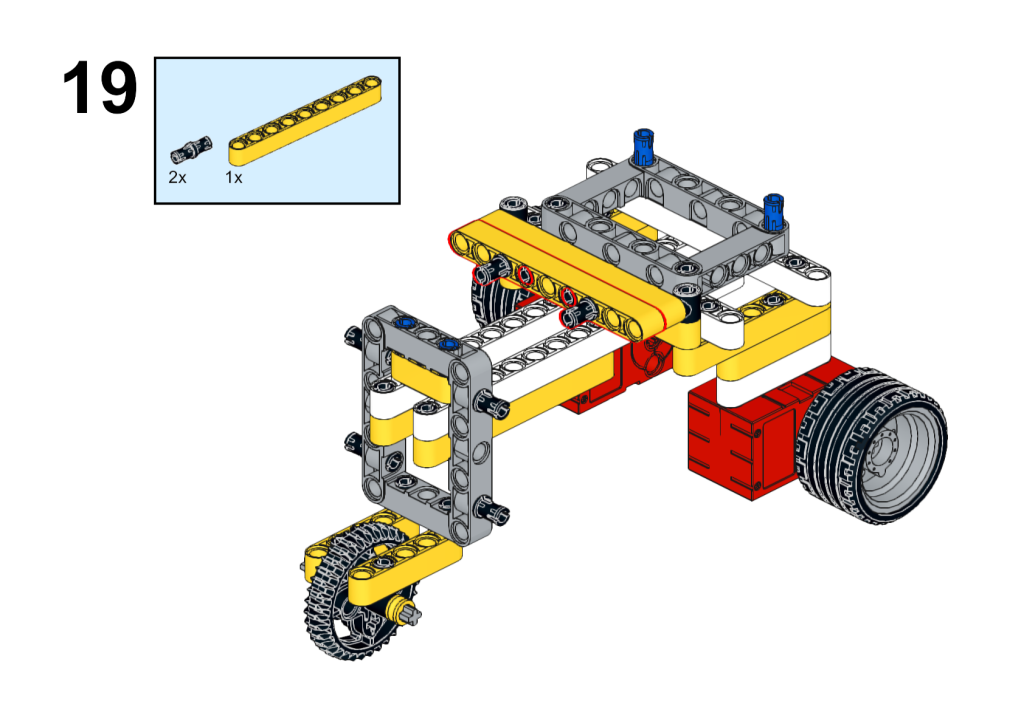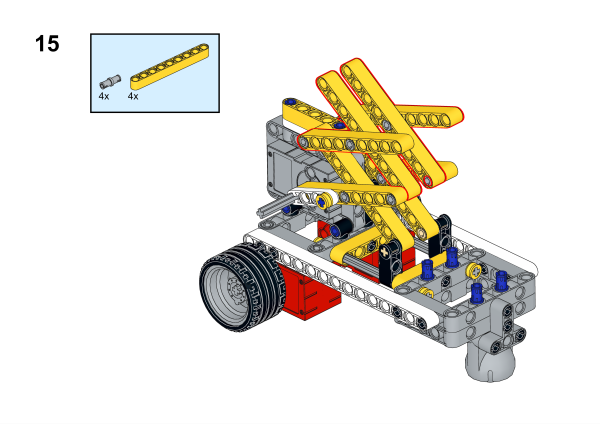Advancing with Simple & Powered Machines 2024
Introduction
In this article, we will explore the concept of Simple & Powered Machines and how they can be used to make our lives easier. Simple machines are devices that have few or no moving parts and are used to modify motion and force in order to perform work. They are the simplest mechanisms known that can increase force. Powered machines are machines that use energy to perform work. They are machines that are powered by electricity, gasoline, or other sources of energy. Examples of powered machines include cars, airplanes, and trains.
What are Simple Machines?
Simple machines are devices that have few or no moving parts and are used to modify motion and force in order to perform work. They are the simplest mechanisms known that can increase force. The simple machines are the inclined plane, the lever, the wedge, the wheel and the axle, the pulley, and the screw.
What are Powered Machines?
Powered machines are machines that use energy to perform work. They are machines that are powered by electricity, gasoline, or other sources of energy. Examples of powered machines include cars, airplanes, and trains.
The Importance of Simple & Powered Machines
Simple and powered machines are important because they make our lives easier. They allow us to do things that we would not be able to do otherwise. For example, simple machines like the wheel and axle allow us to move heavy objects with ease. Powered machines like cars and airplanes allow us to travel long distances quickly and efficiently.
How Simple & Powered Machines Work
Simple machines work by changing the direction or magnitude of a force. For example, a lever can be used to lift a heavy object by applying a small force over a large distance. Powered machines work by using energy to perform work. For example, a car engine uses gasoline to produce energy that is used to move the car.
Applications of Simple & Powered Machines
Simple and powered machines have many applications in our daily lives. They are used in everything from construction to transportation. For example, simple machines like the pulley are used in construction to lift heavy objects. Powered machines like cars and airplanes are used for transportation.
Advancing with Simple & Powered Machines
The LEGO® Education Simple & Powered Machines set is a great way to learn about simple and powered machines. The set includes 10 lessons that cover topics such as cams, gears, levers, pulleys, and screws. Each lesson is designed to take 90 minutes, but can be broken down into two 45-minute sessions if needed. The lessons are suitable for intermediate and advanced students in grades 6-8.
Lesson 1: Cam
A cam is a shaped frame turning about an axis, like a rotating wheel. Cams can control the timing and degree of movement.
Lesson 2: Gear
The gear is a simple machine that can be used to efficiently transfer force and motion.
Lesson 3: Inclined Plane
The inclined plane is a slanted surface used to raise objects.
Lesson 4: Pawl and Ratchet
Pawl and ratchet is a simple machine that is used in connection with gear mechanisms to allow linear or rotary motion in only one direction.
Lesson 5: Pulley
A pulley is a simple machine that can be used to lift objects and transmit motion. Pulleys can be either movable or fixed and multiple pulley wheels on one axle can be used ad block and tackle.
Lesson 6: Screw
The screw is a simple machine and a modification of an inclined plane.
Lesson 7: Structures
Structures is a simple machine in which individual parts are arranged to form a whole. All structures are under the influence of external and internal forces.
Lesson 8: Wedge
The wedge is a simple machine that is a modification of an inclined plane, however a wedge can move.
Lesson 9: Wheel and Axle
Wheel and Axle is a simple machine, often a big wheel and a small axle, which is secured to one another. A wheel and axle always rotate at the same speed.
Lesson 10: Beam Balance
Explore the scientific concepts of levers, forces, effects of loads and solve problems involving scale factors.
Simple & Powered Machines are an important part of our daily lives. They make our lives easier by allowing us to do things that we would not be able to do otherwise. By understanding how Simple & Powered Machines work, we can better appreciate the world around us. The LEGO® Education Simple & Powered Machines set is a great way to learn about simple and powered machines.
FAQs
- What are Simple Machines? Simple machines are devices that have few or no moving parts and are used to modify motion and force in order to perform work.
- What are Powered Machines? Powered machines are machines that use energy to perform work. They are machines that are powered by electricity, gasoline, or other sources of energy.
- What is the importance of Simple & Powered Machines? Simple and powered machines are important because they make our lives easier. They allow us to do things that we would not be able to do otherwise.
- How do Simple & Powered Machines work? Simple machines work by changing the direction or magnitude of a force. Powered machines work by using energy to perform work.
- What are some applications of Simple & Powered Machines? Simple and powered machines have many applications in our daily lives. They are used in everything from construction to transportation.
Definition of Simple & Powered Machine
Machines, whether simple or powered, play a crucial role in various industries. Understanding the nuances of these machines is essential for appreciating their impact on technology, efficiency, and daily life.
Significance in Various Industries
From manufacturing to transportation, simple and powered machines have become integral components, driving progress and innovation.
Evolution of Simple Machines
Historical Overview
Tracing the roots of simple machines provides insight into their evolution and the pivotal role they played during the Industrial Revolution.
Impact on Industrial Revolution
Simple machines revolutionized industries, fostering unprecedented growth and shaping the modern world.
Types of Simple Machines
Lever
One of the fundamental simple machines, levers, exemplifies the principles of mechanical advantage and force distribution.
Inclined Plane
Inclined planes simplify tasks by reducing the effort required to move objects vertically.
Wheel and Axle
This classic pairing facilitates rotational motion, making it a cornerstone in various mechanical systems.
Pulley
Pulleys leverage the principles of force and motion, finding applications in lifting and transporting heavy loads.
Wedge
Wedges excel in separating objects, showcasing their versatility in both simple and complex tasks.
Screw
The helical wonder of screws highlights precision and efficiency, making them indispensable in numerous applications.
The Power Behind Machines
Transition to Powered Machines
As technology advanced, simple machines paved the way for the emergence of powered machines, marking a significant shift in industrial practices.
Role of Energy Sources
Understanding the energy sources powering machines is crucial for optimizing performance and ensuring sustainability.
The Intersection: Simple Meets Powered
Hybrid Machines
The integration of simple and powered elements results in hybrid machines, combining efficiency with adaptability.
Enhanced Efficiency and Productivity
The synergy between simple and powered components enhances overall efficiency, leading to increased productivity in various sectors.
Applications in Daily Life
Household Devices
From kitchen appliances to home security systems, simple and powered machines have become indispensable in daily life.
Transportation Sector
Advancements in transportation, from automobiles to public transit, owe their efficiency to the integration of simple and powered technologies.
Manufacturing Processes
Industries leverage these machines to streamline manufacturing processes, reducing costs and optimizing production.
Advantages of Integrating Simple & Powered Machines
Increased Output
The combined power of simple and automated systems results in a substantial increase in output and production capabilities.
Resource Optimization
Efficient use of resources, both human and material, is a key advantage of integrating simple and powered machines.
Environmental Impact
Balancing productivity with environmental sustainability is achievable through the judicious use of advanced machine technologies.
Challenges and Innovations
Technological Challenges
Adapting to rapidly evolving technologies poses challenges, but it also sparks innovations that drive progress.
Innovations Driving Change
Innovative solutions address challenges, propelling the industry forward and opening new possibilities for machine integration.
Future Trends
Integration of Artificial Intelligence
The future of machine advancement lies in the seamless integration of artificial intelligence, promising unprecedented capabilities.
Sustainable Machine Technologies
A growing emphasis on sustainability will steer the development of machines that minimize environmental impact.
Real-world Examples
Case Studies
Examining real-world applications through case studies provides insights into successful implementations of simple and powered machines.
Success Stories
Highlighting success stories underscores the transformative power of integrating simple and powered technologies.
Tips for Implementing in Industries
Cost-Effective Strategies
Implementing these technologies need not be prohibitively expensive; cost-effective strategies can pave the way for widespread adoption.
Training Workforce
Ensuring the workforce is equipped with the necessary skills is crucial for successful integration and operation of advanced machines.
Impact on Employment
Changing Job Landscape
The integration of advanced machines reshapes the job landscape, creating new opportunities while altering traditional roles.
Upskilling Opportunities
To thrive in the evolving industrial landscape, upskilling opportunities become essential for the workforce.
Regulatory Considerations
Compliance Standards
Adhering to compliance standards ensures the safe and ethical use of advanced machines in various industries.
Safety Measures
Implementing robust safety measures is paramount to prevent accidents and ensure a secure working environment.
User Testimonials
Industry Experts
Insights from industry experts shed light on the practical benefits and challenges of integrating simple and powered machines.
End-users
Feedback from end-users provides valuable perspectives on the real-world impact of these technologies.
Conclusion
Recap of Key Points
From the historical evolution to the future trends, the article explored the multifaceted world of simple and powered machines.
Future Prospects
The continuous evolution of technology promises exciting prospects, with simple and powered machines at the forefront of innovation.






Comments
Post a Comment